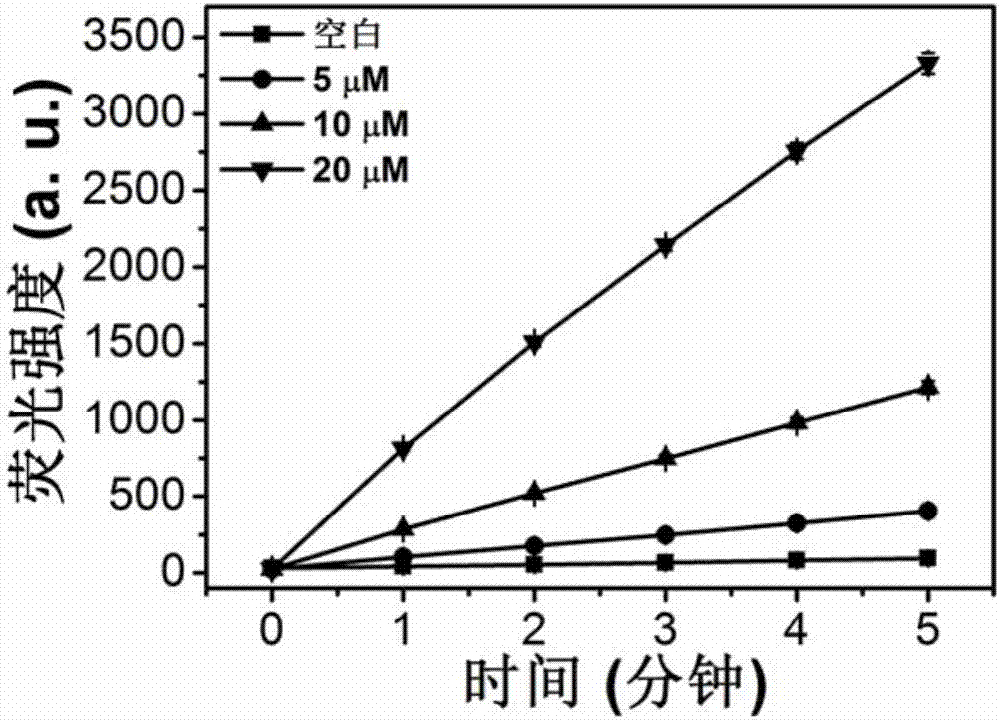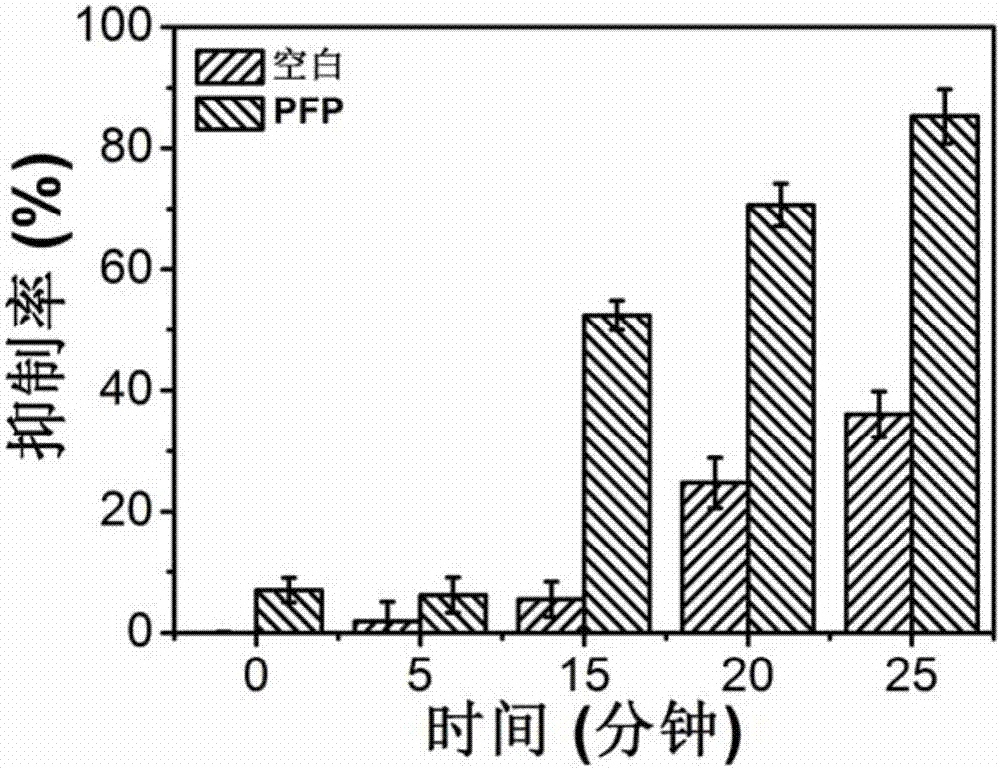Method for inhibiting and/or damaging biological membrane
A biofilm and compound technology, applied in botany equipment and methods, chemicals for biological control, biocides, etc., can solve problems such as insensitivity to antibiotics, slow growth of bacteria, and inability to eradicate biofilms, so as to avoid Drug resistance, the effect of suppressing the development of drug resistance
- Summary
- Abstract
- Description
- Claims
- Application Information
AI Technical Summary
Problems solved by technology
Method used
Image
Examples
Embodiment approach
[0045] According to a specific embodiment of the present invention, the step of detecting the effect of destroying biofilm may be: after contacting the compound represented by formula (I) with a sample containing biofilm (such as bacterial liquid) and illuminating, ultrasonic vibration Disperse the biofilm; dilute the dispersed bacteria to a certain number of times, spread 100 μL of the diluted solution on the solid medium, and count the number of colonies on the plate after culturing at 37°C for 20 hours; then calculate the inhibition rate of the biofilm according to formula (III) IR. The dilution factor can be determined according to the number of bacteria, so that the number of colonies on the solid medium is convenient for statistics.
[0046] In the present invention, the amount of the sample containing biofilm contacted with the compound represented by formula (I) can vary within a wide range. When the sample containing biofilm is a liquid sample containing bacteria, the...
Embodiment 1
[0063] This embodiment is used to illustrate the synthesis of compound PFP shown in formula (I)
[0064] The specific structure of PFP is:
[0065]
[0066] 9,9-bis(6′-bromohexyl)-2,7-dibromofluorene: 1,6-dibromohexane (97.6g, 400mmol) was added to 100ml of 50% potassium hydroxide solution, and 1.28g was added for phase transfer Catalyst tetrabutylammonium bromide (TBAB), the temperature of the reaction solution was raised to 75°C, and then 2,7-dibromofluorene (12.96g, 40mmol) was added and stirred for 15min. After the reaction was stopped and cooled to room temperature, extracted with dichloromethane (100ml×3), the combined organic phases were washed with 1M hydrochloric acid solution and distilled water, dried over anhydrous magnesium sulfate, filtered, and concentrated. The crude product was separated and purified by silica gel column chromatography, and the developing solvent was dichloromethane / petroleum ether (v / v=1 / 9) to obtain the white solid product 9,9-bis(6′-bro...
Embodiment 2
[0072] This example is used to illustrate the revived culture of Staphylococcus aureus
[0073] Using Staphylococcus aureus ATCC 6538 as a template, use 75% alcohol absorbent cotton to sterilize the outer surface of the purchased ampoule containing Staphylococcus aureus ATCC 6538 in the ultra-clean workbench, heat the top of it with a flame, and drop 400 μL without Bacterial water to the top of the heated ampoule to rupture it. Draw 300 μL of suitable liquid culture medium (can be replaced by sterile water), drop it into the ampoule bottle, shake and blow gently, so that the freeze-dried bacteria dissolve into a suspension, absorb all the bacterial suspension, and transplant them into two NB solid culture medium respectively. Incubate at 37°C for 20 hours. Use an inoculation loop to scrape an appropriate amount of bacterium and inoculate it into a new NB solid medium, and continue to cultivate at 37°C. Continue to culture for 3-4 generations in this way to obtain a stable str...
PUM
 Login to View More
Login to View More Abstract
Description
Claims
Application Information
 Login to View More
Login to View More - R&D Engineer
- R&D Manager
- IP Professional
- Industry Leading Data Capabilities
- Powerful AI technology
- Patent DNA Extraction
Browse by: Latest US Patents, China's latest patents, Technical Efficacy Thesaurus, Application Domain, Technology Topic, Popular Technical Reports.
© 2024 PatSnap. All rights reserved.Legal|Privacy policy|Modern Slavery Act Transparency Statement|Sitemap|About US| Contact US: help@patsnap.com










